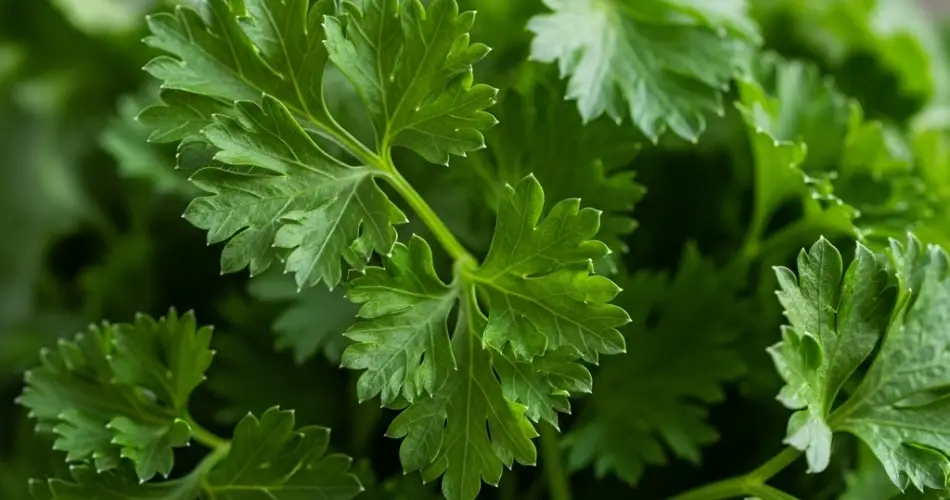Parsley is more than just a garnish—it’s a flavorful, nutrient-rich herb that’s easy to grow at home, even for those who haven’t had the best luck with plants in the past. With just a few practical tips, you can cultivate lush, productive parsley that provides a steady supply of fresh leaves throughout the growing season.
If you’ve struggled to keep plants alive before, don’t worry—this guide is tailored to beginners who want to turn things around and enjoy a thriving parsley patch, whether in the garden or a pot on the windowsill.
Why Grow Parsley?
Parsley (Petroselinum crispum) is a biennial herb grown as an annual in most home gardens. It’s incredibly versatile in the kitchen and packed with vitamins A, C, and K. Plus, it’s compact, hardy, and can be grown indoors or outdoors with relative ease.
To get the most out of your parsley plants, it’s essential to start with the right setup and follow a few proven strategies to encourage full, bushy growth and frequent harvests.
Step 1: Start with Strong Seeds or Seedlings
Parsley can be grown from seed or starter plants. If you’re starting from seed, be aware that parsley seeds are slow to germinate. Soaking them in warm water overnight before planting helps speed up the process.
-
Soil: Choose a well-draining, nutrient-rich soil. A mix of potting soil and compost works well.
-
Container or garden bed: Parsley grows well in pots at least 6–8 inches deep or directly in garden soil.
-
Sunlight: Parsley thrives in full sun but tolerates partial shade. Aim for 6 hours of light daily.
If starting indoors, place the container near a bright window or under grow lights until the seedlings are strong enough to be transplanted or moved outdoors.
Step 2: Water Wisely
One of the most common ways beginners kill parsley is by overwatering or letting the soil dry out completely. Parsley prefers consistently moist soil, but it should never be soggy.
-
Water when the top inch of soil feels dry.
-
Avoid watering from above if possible. Instead, water at the base to prevent leaf diseases.
-
If growing in containers, ensure they have proper drainage holes to prevent root rot.
In hot weather or during active growth, you may need to water more frequently—just monitor the soil and adjust accordingly.
Step 3: Feed for Success
Parsley is a leafy herb, which means it benefits from nutrients that support foliage growth. A nitrogen-rich fertilizer or compost tea every 3–4 weeks can help boost leaf production.
For organic feeding, mix a handful of compost or worm castings into the soil monthly to replenish nutrients and encourage strong growth.
Step 4: Prune and Harvest the Right Way
To maximize yield, it’s essential to harvest correctly. Many beginners make the mistake of plucking individual leaves from the top, which can stunt growth.
Here’s how to harvest properly:
-
Always cut the outer stems at the base, close to the soil.
-
Leave the inner shoots intact so the plant continues growing from the center.
-
Use sharp scissors or garden shears to avoid damaging the plant.
Begin harvesting once the plant has grown at least 6 inches tall and has a good amount of foliage. Regular harvesting not only provides fresh herbs but also stimulates more growth.
Step 5: Keep Plants Cool and Happy
Parsley prefers mild temperatures. In hot climates, provide some afternoon shade or move pots to a cooler spot during peak sun. During the peak of summer, leaf production may slow—but don’t worry, it usually bounces back in cooler weather.
For indoor plants, avoid placing them near heat vents or cold drafts. A stable environment with good air circulation is ideal.
Step 6: Extend the Season
Parsley is a biennial, meaning it completes its life cycle in two years. In the first year, it produces leaves; in the second, it bolts (flowers) and sets seed. To extend your harvest:
-
Regularly pinch off flower buds when they appear.
-
If you live in a mild climate, parsley can continue growing through winter with some protection.
-
For colder regions, bring pots indoors or cover garden plants with frost cloth.
Growing a second batch midseason ensures a fresh supply if your first plant starts declining.
Troubleshooting Common Issues
-
Yellowing leaves: Often a sign of overwatering or nutrient deficiency.
-
Slow growth: May indicate compacted soil, lack of sunlight, or poor drainage.
-
Leggy stems: Happens when parsley doesn’t get enough light. Move it to a sunnier location.
Parsley is generally pest-resistant, but keep an eye out for aphids or leaf miners. Remove affected leaves and spray with neem oil if needed.
Final Thoughts
Even if you’ve never had success with plants before, parsley is a great herb to start your gardening journey. With the right approach—proper soil, consistent watering, regular pruning, and a bit of sunlight—you can enjoy a lush, productive parsley plant that provides flavor and freshness all season long.
So don’t be discouraged by past failures. Grab some seeds or seedlings, follow these simple tips, and watch your parsley flourish.



